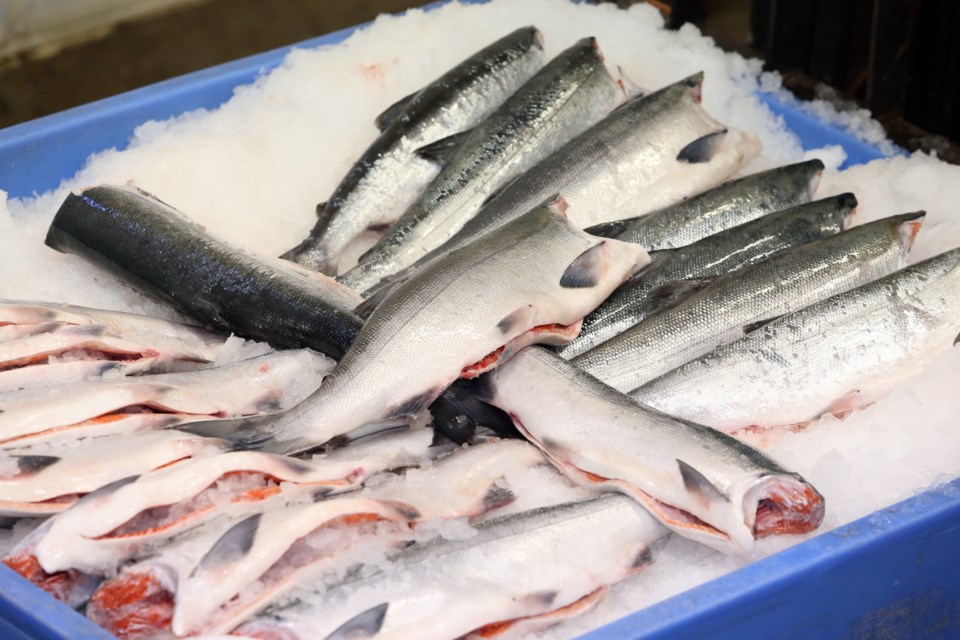What is expected to be a massive sockeye salmon return on the Fraser River could mean consumers will pay less for salmon.
Cody Smith of wholesaler Albion Fisheries said consumers stand to pay as much as 10 per cent less this year if the salmon return lives up to expectations.
“We’re coming off a year of very high sockeye prices; 2013 showed some of the highest prices out of Alaska, Russia and B.C. … With a large volume of fish in Alaska [caught this year] and a big Fraser run of 15 million or more, you could definitely see a market softening,” Smith said. “This year is unique. This is a large enough fishery to have an impact on global supply and impact the global market.”
Monday marked the first commercial opening for sockeye in Area E, which includes the lower Fraser River, for the gill net fleet. Between 250 and 300 boats were expected to drop nets between 3 and 6 p.m. Monday to land their share of what the Department of Fisheries and Oceans has estimated could be a return of as many as 23 million salmon.
“This is the return coming off the 30 million sockeye that came back in 2010. This is the progeny of that return,” said Les Jantz, Canadian co-chairman of the Fraser River Panel. “This is a substantial number of fish.”
Jantz said there is likely to be one opening for the fleet this week and another next week, unless returns are “really outstanding” over the next day or two.
“We will evaluate the information from [Monday’s opening] and other fisheries that are going and the test fisheries which have been open since mid-June in Johnstone Strait and Juan de Fuca [Strait] ... and compare that to our season expectations and models to determine if the return is as forecast,” he said.
“If they aren’t, we will modify fishing plans, and if they are returning stronger than forecast, we will modify plans upward as well.”
Jantz said the situation is fluid. “It changes on a day-by-day basis. We are getting a steady inflow of data.”
The Fraser Panel — the decision-making body for waters that approach the Fraser — meets twice a week, more if required, to make decisions on the fishery in those waters.
Smith said indications he’s been getting from fishing crews in Haida Gwaii and Johnstone Strait waters are that there are a lot of sockeye.
“Some troll boats are hitting sockeye at greater depths, usually indicating there are more fish in the water and competing for resource and they are moving down in the water column for more access to feed,” Smith said.
The result should be a bumper crop, which Smith notes has far-reaching ripple effects. Wholesalers such as Albion will hire people to handle an increased number of fish. It also means increased ice production, transport, packaging and export shipments. “A large run is good for our industry and B.C. in general,” Smith said.
Albion, which already has sockeye from Johnstone Strait, will have salmon from the Fraser River fishery for delivery to restaurants and markets in Victoria by the middle of this week.
When asked if the tailings pond breach at the Mount Polley mine in B.C.’s Interior will affect the Fraser fishery, Jantz said no. “It’s unclear whether there will be any impact. Certainly, the water quality samples taken suggest very little detected substances we should be concerned about,” he said. “Samples are being collected for analysis to see if there are any toxic elements that fish are ingesting up there.”



